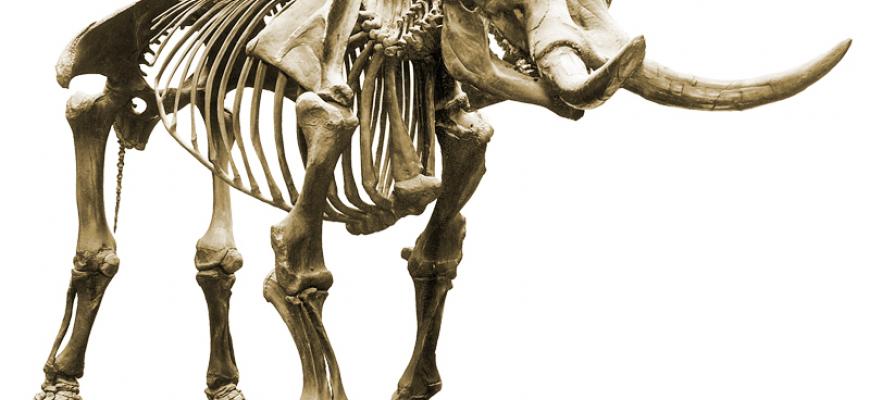The Cohoes Mastodon was discovered in 1866 during construction of Harmony Mill No. 3 near Cohoes Falls on the Mohawk River in the city of Cohoes, New York. The mastodon’s remains were found deeply buried in two potholes, which had been worn into the bedrock by the swirling action of water and stones at the end of the last Ice Age. In life, the Cohoes Mastodon stood about eight and one-half feet high at the shoulder, was about fifteen feet long, and weighed between eight and ten thousand pounds.
Is this a Mastodon or a Mammoth?
Although mastodons resembled mammoths (also extinct) and elephants, they were not closely related mammal species. The ancestors of the mastodons diverged from the evolutionary tree, about 15 million years ago, long before those of the mammoths and elephants did.
A major difference between mastodons and mammoths was the shape of their teeth. Mastodon teeth had pointed cusps used to cut and crush the coarse, often woody plants on which they fed. In fact, the name mastodon is derived from Greek words describing the shape of their teeth, “mastos”, meaning breast, and “odous”, meaning tooth. In contrast, mammoths and elephants, had molar teeth that were flattened on top, suitable for grazing on grasses. The different diets and habitats of mastodons and mammoths suggest that they behaved differently.
What Happened to the Mastodons?: The End-Pleistocene Mass Extinction
Why did mastodons, mammoths and many other large mammals become extinct about 10,000 years ago, while other animals did not? The question has puzzled researchers for over one hundred years. One explanation is that climatic change caused their habitat to shrink in size. Along with their low birthrates, this environmental stress made these mammals especially vulnerable to predation and disease. Perhaps, like mammoths, mastodons were also hunted by early American Indians. The most probable explanation is a combination of human hunting and climatic change caused the mastodons and other large mammals to go extinct.




